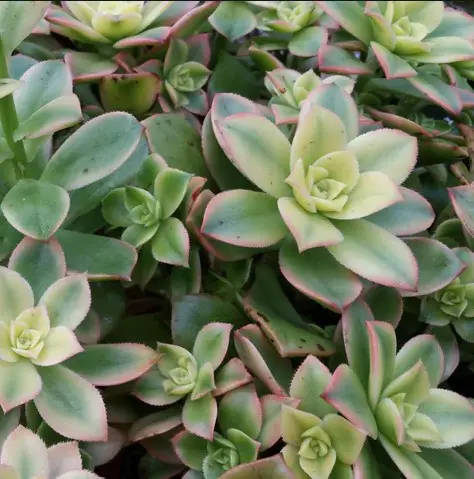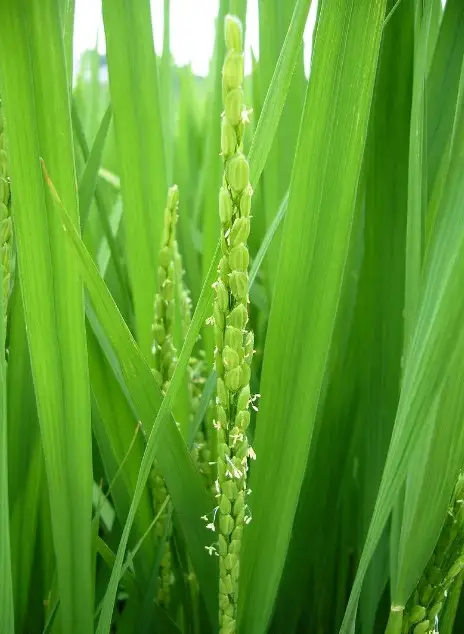The diversity of plant life on Earth is a testament to the evolutionary prowess that has enabled flora to colonize nearly every conceivable habitat. Among the myriad forms of plant life, two reproductive strategies stand out for their unique approaches to survival and reproduction: monocarpic and polycarpic plants. This distinction, based not just on their reproductive cycle but also on their ecological and evolutionary significance, paints a vivid picture of plant biodiversity.
Monocarpic plants bloom once in their lifetime, set seeds, and then die. This singular event can occur after many years or within a single season, depending on the species. In contrast, polycarpic plants can flower multiple times over many years, often living for decades or even centuries. This fundamental difference in life strategy affects not just the individual plant but the ecosystem it inhabits.
Exploring the nuances of these strategies reveals insights into how plants adapt to their environments, compete for resources, and ensure their genetic legacy. From the towering agave that blooms once before dying to the enduring oak that witnesses centuries, the stories of monocarpic and polycarpic plants are tales of survival, adaptation, and the intricate dance of life.

Plant Reproduction Basics
Types of Plant Reproduction
Plants reproduce in two fundamental ways: sexual reproduction and asexual reproduction. These modes of reproduction are not just crucial for the survival of plant species but also influence their adaptability and diversity.
Sexual vs. Asexual reproduction
Sexual reproduction in plants involves the fusion of male and female gametes, leading to the formation of seeds that grow into new plants. This process ensures genetic diversity, which is vital for the adaptability and evolution of plant species. Pollination is a key step in sexual reproduction, with pollinators such as bees, birds, and wind playing a significant role.
Asexual reproduction, on the other hand, does not involve the fusion of gametes. Instead, new plants are produced from the parts of existing plants, such as stems, roots, or leaves. This method results in offspring that are genetically identical to the parent plant. Common forms of asexual reproduction include cutting, layering, and division.
Plant Life Cycle Overview
Plants can be categorized into annuals, biennials, and perennials based on their life spans and reproductive cycles.
- Annual plants complete their life cycle, from germination to the production of seeds, within one year and then die.
- Biennial plants require two years to complete their life cycle. In the first year, they grow vegetatively, and in the second year, they flower, produce seeds, and die.
- Perennial plants live for more than two years, often flowering and producing seeds multiple times throughout their lives.
Monocarpic Plants
Definition and Characteristics
Monocarpic plants are those that flower once in their lifetime, produce seeds, and then die. This single reproductive event can occur over a short period or after many years of growth.
Single flowering event
The defining characteristic of monocarpic plants is their one-time flowering event. After years of vegetative growth, these plants invest all their energy into flowering, seed production, and then senescence.
Life span variations
Monocarpic plants can be annuals, biennials, or perennials, depending on how long they take to reach their flowering stage. Some monocarpic plants, like certain bamboo species, may not flower for decades, while others complete their life cycle in a single season.
Examples of Monocarpic Plants
Notable examples include the agave, known for its spectacular final bloom, and bamboo species, which may flower only once every few decades. Annual plants like wheat and rice are also monocarpic, flowering and dying within one growing season.
Ecological Significance
Monocarpic plants have developed unique adaptation and survival strategies. By concentrating their resources into a single, massive reproductive effort, they can maximize seed production and dispersal, often leading to successful colonization of new areas.
Polycarpic Plants
Definition and Characteristics
Polycarpic plants are capable of flowering multiple times throughout their lives. Unlike monocarpics, these plants do not die after their first reproductive event but can continue to grow and reproduce for many years.
Multiple flowering cycles
The ability to undergo multiple flowering cycles allows polycarpic plants to contribute to their species’ gene pool over an extended period. This trait is advantageous for long-term survival and adaptation.
Typical life span patterns
Most trees, shrubs, and perennials are polycarpic, with life spans that can range from several years to centuries. These plants often establish more stable populations than monocarpic species.
Examples of Polycarpic Plants
Examples of polycarpic plants include oak trees, which can live for hundreds of years and flower annually, and rose bushes, known for their repeated blooming cycles. Many garden perennials also fall into this category, providing color and life year after year.
Ecological Importance
Polycarpic plants play a crucial role in ecosystems and biodiversity. Their repeated reproductive cycles ensure ongoing genetic contribution and adaptability, supporting a rich and dynamic plant community. These plants often serve as foundational species in their ecosystems, providing essential resources and habitats for a wide range of other organisms.
Key Differences
Life Span and Reproduction
Comparison of flowering frequency and longevity
Monocarpic and polycarpic plants exhibit fundamental differences in their life spans and reproduction strategies. Monocarpic plants have a one-time flowering event, after which they die. This event could happen after many years in perennials like the agave, or within a single year for annuals. Polycarpic plants, in contrast, can flower multiple times throughout their lives, often living for many years and sometimes centuries.
The key difference lies in their approach to reproduction. Monocarpic plants invest all their resources into a singular, often spectacular flowering event aimed at producing a large number of seeds. Polycarpic plants spread their reproductive efforts over several years, flowering annually or biennially, which allows them to adapt over time to changes in their environment.
Ecological Roles
Diverse strategies for survival and reproduction
Monocarpic and polycarpic plants have developed diverse ecological strategies to navigate their survival and reproduction. Monocarpic plants often dominate their habitat for a period, creating a massive seed bank that ensures future generations. This strategy is particularly effective in unstable or unpredictable environments. Polycarpic plants contribute to the stability of their ecosystems, providing continuous resources and habitats for other organisms through their repeated flowering cycles.
Human Impact
Agricultural and horticultural implications
The understanding of monocarpic and polycarpic traits has significant implications for agriculture and horticulture. Monocarpic plants, including many crops like rice and wheat, are crucial for food production. Their one-time, abundant seed production is harnessed to feed billions. In horticulture, the unique blooming patterns of monocarpic plants are often a focal point in gardens and landscapes. Conversely, polycarpic plants are staples in permaculture and sustainable agriculture due to their long-term yield and less intensive soil use, providing continuous harvests and environmental benefits such as soil stabilization and improved biodiversity.
Adaptations and Strategies
Monocarpic Plant Strategies
Energy allocation and survival tactics
Monocarpic plants have developed unique energy allocation and survival tactics. They focus on vegetative growth, storing nutrients and energy over years, sometimes decades, before expending all their stored resources on a massive, once-in-a-lifetime reproductive effort. This strategy ensures that when they do flower, they produce a maximum number of seeds to spread their genetic material far and wide, a tactic especially beneficial in harsh or competitive environments.
Polycarpic Plant Strategies
Sustained reproduction and growth
Polycarpic plants adopt a strategy of sustained reproduction and growth, allowing them to reproduce multiple times throughout their lives. This approach enables these plants to continuously adapt and evolve over time, responding to environmental changes and threats. By allocating resources to both growth and reproduction annually or biennially, polycarpic plants can maintain their presence in an ecosystem, supporting not just their species’ survival but also providing ongoing benefits to the biodiversity of their habitat.
Challenges and Considerations
Conservation Efforts
Implications for endangered species
The differing life strategies of monocarpic and polycarpic plants have direct implications for conservation efforts. Protecting monocarpic species, particularly those with long intervals between flowering events, requires ensuring they can survive until their single reproductive event. This may involve habitat protection, preventing premature death due to human activities, and safeguarding the genetic diversity of these plants. For polycarpic species, conservation efforts might focus on protecting the habitats where they can continue their cycle of growth and reproduction, ensuring their long-term survival.
Climate Change Impact
Effects on flowering cycles and plant survival
Climate change poses a significant threat to the flowering cycles and survival of both monocarpic and polycarpic plants. Changes in temperature, rainfall patterns, and the frequency of extreme weather events can disrupt the finely tuned cycles of plant reproduction. For monocarpic plants, altered conditions could mean never reaching the point of flowering or failing to successfully seed the next generation. For polycarpic plants, changes in climate could affect their annual flowering and fruiting patterns, potentially reducing their reproductive success over time. Addressing the impacts of climate change on plant life requires a multifaceted approach, including habitat preservation, climate mitigation efforts, and possibly, the development of climate-resilient plant varieties.
Frequently Asked Questions
What defines a monocarpic plant?
Monocarpic plants are characterized by a single reproductive episode before dying. This unique lifecycle can span from just a few weeks in annuals to several decades in some perennials, with the plant investing all its energy into a dramatic final bloom that ensures the dispersal of its seeds.
How do polycarpic plants reproduce?
Polycarpic plants have the ability to flower and produce seeds multiple times throughout their lives. This reproductive strategy allows these plants to contribute genetically to their species over several seasons, enhancing their ability to adapt and survive in varying environmental conditions.
Why are some plants monocarpic?
The monocarpic life strategy is believed to be an evolutionary adaptation that allows certain plants to maximize reproductive success in specific environments. By concentrating resources into one large reproductive effort, these plants can produce a significant number of seeds, increasing the chances of offspring survival in competitive or harsh conditions.
Can monocarpic plants live for many years?
Yes, some monocarpic plants, like the agave and bamboo, spend many years, even decades, growing and storing energy before blooming once and then dying. This long preparatory period is crucial for the plant to accumulate sufficient resources to support its singular, often spectacular, reproductive event.
Conclusion
The remarkable diversity between monocarpic and polycarpic plants underscores the complexity of plant life and its adaptation to Earth’s varied ecosystems. The strategic differences in their reproductive cycles are a reflection of the myriad ways in which life has evolved to sustain itself, showcasing nature’s ingenuity in ensuring survival and reproduction across generations.
Understanding these plant strategies enriches our appreciation of biodiversity and the delicate balance within natural ecosystems. It serves as a reminder of the resilience and vulnerability of life on our planet, emphasizing the importance of conservation efforts to protect the diverse species that inhabit it. As we continue to explore and understand these unique life forms, we uncover more about the intricacies of life itself and the essential role plants play in the Earth’s ecological and evolutionary narrative.

